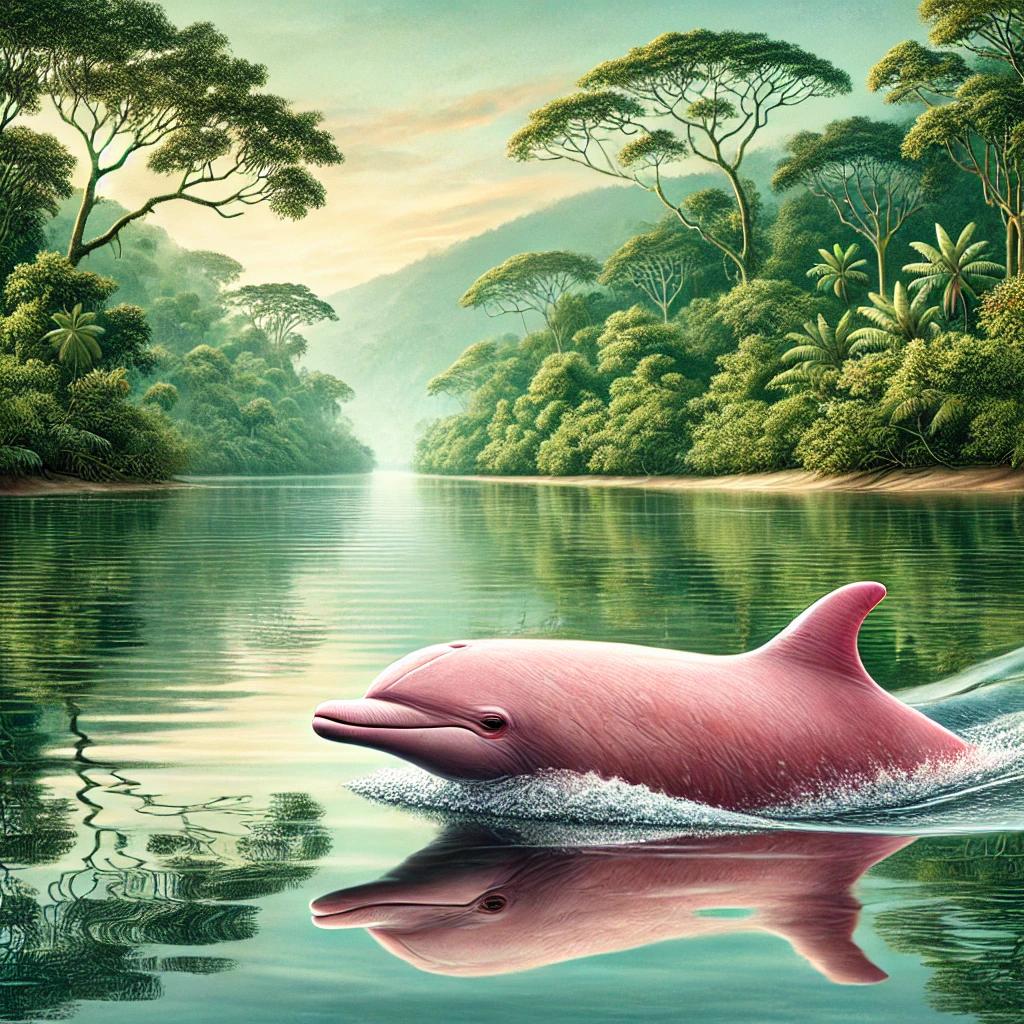Amazon Rainforest Fauna, FOREVER THE FOREST
Marine Inhabitants of the Amazon: Guardians of Ecological Balance
Discover the astonishing aquatic diversity of the Amazon region and its importance to nature
The marine animals that inhabit the Amazon region are fascinating examples of adaptations and ecological interconnections. Although the area is primarily known for its dense tropical rainforest and rich terrestrial biodiversity, the Amazon’s aquatic ecosystems host a surprising variety of aquatic species, including some considered marine. This article explores the main marine animals living in the region, their unique adaptations, and their crucial importance to nature’s balance.
The aquatic ecosystems of the Amazon
The Amazon region is interwoven with a vast network of rivers, lakes, wetlands, and estuaries, forming one of the largest river systems in the world. The Amazon River, in particular, is one of the most important, carrying one-fifth of all freshwater flowing into the oceans. This region also includes the meeting of freshwater and brackish water, creating unique environments that support a great diversity of marine and semi-marine life.
Key marine animals of the Amazon
1. Guiana Dolphin (Sotalia guianensis)
The Guiana dolphin, also known as the gray dolphin or marine dolphin, is a dolphin species that inhabits coastal and estuarine areas of the Amazon region. These dolphins are highly adapted to brackish water environments and can be found in estuaries where the Amazon River meets the Atlantic Ocean.
Ecological importance: The Guiana dolphin plays a crucial role as a predator of fish and crustaceans, helping to maintain balance in prey populations. Additionally, its presence indicates environmental health, as it reflects water quality and food availability.
2. Amazonian Manatee (Trichechus inunguis)
Although the Amazonian manatee is technically a freshwater species, it has marine relatives and shares similar characteristics with the marine manatee. This giant herbivore is found in rivers and lakes but is also seen in areas where freshwater and saltwater mix.
Ecological importance: The manatee acts as an underwater gardener, controlling excessive growth of aquatic vegetation. This not only improves water circulation but also promotes healthy habitats for other species.
3. Sea Turtles
Sea turtles, especially the hawksbill turtle (Eretmochelys imbricata) and the green turtle (Chelonia mydas), frequently visit the coastal and estuarine waters of the Amazon region. They use these areas to feed and rest during their long migrations.
Ecological importance: These turtles play critical roles in marine ecosystems, such as controlling sponge populations and maintaining seagrass beds. Additionally, their beach nests help fertilize soils with essential nutrients.
4. Estuarine Fish
Species such as the tambaqui (Colossoma macropomum), which is freshwater but tolerates brackish water, and the snook (Centropomus sp.), which transitions between freshwater and saltwater environments, are common in the Amazon region. These fish have adapted to the variable conditions of estuaries.
Ecological importance: They serve as vital links in the food chain, both as predators and as prey for other species. Moreover, many of these fish are fundamental to the food security of local communities.
5. Crabs and Blue Crabs
Crabs (Callinectes sp.) and blue crabs (Ucides cordatus) are also important inhabitants of Amazonian mangroves and estuaries. They play essential roles as recyclers of organic matter, contributing to soil and water quality.
Ecological importance: These crustaceans are considered “ecosystem engineers” because they help maintain the health of mangroves, which are crucial for coastal protection and carbon storage.
The importance of marine animals for nature’s balance
Marine and semi-marine animals in the Amazon region perform crucial ecological functions that go far beyond their immediate habitats. Below are some of the main reasons why these species are essential:
1. Maintaining biodiversity
These animals help sustain biodiversity by controlling prey and competitor populations and promoting the coexistence of different species. This is particularly important in ecosystems like mangroves and estuaries, which serve as nurseries for many species.
2. Nutrient cycling
Nutrient cycling is an essential process in any ecosystem. Species like manatees and crustaceans help distribute nutrients through aquatic vegetation and sediments, ensuring habitats remain productive and healthy.
3. Resilience to climate change
Mangroves and estuaries, which house many of these species, are critical ecosystems for carbon capture and protection against extreme weather events, such as storms and floods. The animals inhabiting these areas contribute to their maintenance and resilience.
4. Sustenance for human communities
Many riverside communities depend on these species for their livelihoods, whether through fishing, tourism, or cultural and spiritual uses. Conserving these species is not only an environmental issue but also one of social and economic justice.
Challenges and threats
Unfortunately, the marine animals of the Amazon region face a series of threats that jeopardize their survival and the balance of ecosystems. Among the main threats are:
- Deforestation: Deforestation in coastal and mangrove areas destroys critical habitats.
- Pollution: The dumping of waste and chemicals into rivers and estuaries harms water quality and affects food chains.
- Overfishing: The excessive exploitation of fishery resources reduces the populations of many important species.
- Climate change: Rising sea levels and changes in salinity patterns affect the balance of aquatic ecosystems.
Conservation strategies
Protecting the Amazon’s marine animals requires coordinated efforts between governments, non-governmental organizations, and local communities. Some of the most effective measures include:
- Creation of protected areas: Establish marine and estuarine reserves to ensure critical habitats are preserved.
- Environmental education: Raise community awareness about the importance of these animals and ecosystems.
- Pollution reduction: Implement stricter pollutant control policies and promote proper waste management.
- Promotion of sustainable fishing: Encourage fishing practices that do not compromise fish and other marine resource populations.
The marine animals that inhabit the Amazon region are an essential part of an incredibly interconnected and complex ecosystem. Their preservation is vital not only for local biodiversity but also for global ecological balance. It is imperative that we continue to protect these unique ecosystems, recognizing their importance to the planet and future generations.


